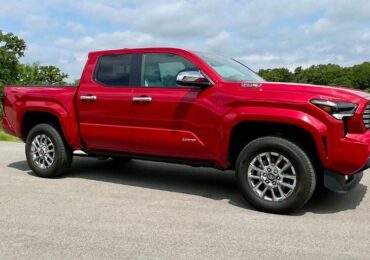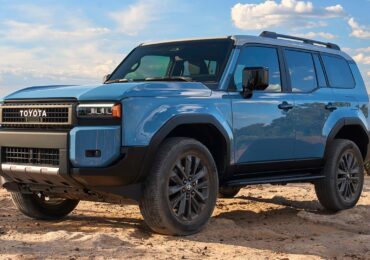Ever glance at your work calendar and find an unexpected free day? It’s rare, right? Even rarer is when this free time coincides with a friend’s schedule. We decided to take his year-long test truck, the Ford F-150 Raptor, and my long-term 2023 Toyota Tundra TRD Pro out for a trail adventure. The Ford F-150 Raptor is renowned for defining the high-speed off-road desert-slayer category, and despite many challengers, few have matched its prowess. Ram’s formidable 1500 TRX might be its only real competition so far, with the jury still out on the Silverado 1500 ZR2. Our Tundra aligns with the likes of the Ram Rebel, GM’s Trail Bosses, and Ford’s Tremor in the “not a Raptor” team. So, where does Toyota’s wildest Tundra fit in? Precisely there. For Toyota enthusiasts, the TRD Pro is the ultimate off-road full-size truck available. Although it doesn’t quite reach Raptor status, Toyota equips the TRD Pro with numerous off-road features, making it the top Tundra choice for off-road adventures. I’ll share some of the Tundra’s off-road features I appreciated while keeping up with Gonderman’s Raptor, but first, I have a few criticisms.

Issue 1:
Power delivery. With traction control turned off, I followed Gonderman in the Raptor up a winding dirt road. As I approached the first corner and pressed the accelerator, I didn’t feel the expected 583 lb-ft of torque. At first, there was a noticeable lack of power, but as I gradually pushed the pedal further, a sudden surge of torque hit, causing the Tundra’s rear to kick out, spraying dust and gravel. It was reminiscent of driving an ’80s performance car with a large turbocharger—there’s little power until the RPMs climb, then an abrupt burst that sends you scrambling to control the slide. While learning to manage the Tundra’s lag can be fun, it makes smooth, brisk driving a challenge. This was surprising, especially since the hybrid Tundra’s electric motor should theoretically minimize turbo lag, as seen in similar systems from competitors.
Issue 2:
Steering. The Tundra TRD Pro’s steering is one aspect I prefer over the Raptor. On the street, the Tundra’s steering feels significantly lighter, giving it a more agile feel compared to the Raptor.
However, this light steering becomes a drawback off-road. On loose surfaces, it feels unnaturally vague and indirect when driving at higher speeds. After driving both the Tundra and Raptor back to back, I began to appreciate the Raptor’s heavier steering, which initially felt cumbersome on the street but proved beneficial in the dirt.
Issue 3:
The 2023 Toyota Tundra TRD’s outward visibility. I’ve mentioned this in earlier updates, but the combination of a low seating position and a long hood with fake plastic vents meant I frequently had to rely on the Multi-Terrain Monitor cameras to avoid scraping the sides of the trail. While it’s a minor inconvenience on the street, it becomes a significant issue when navigating narrow trails.
Issue 4:
The Tundra’s turning radius. Much like the ongoing annoyance of poor outward visibility, the Tundra’s terrible turning radius is a constant source of frustration. One shouldn’t have to dread visiting their local Trader Joe’s because the parking spots demand a two- or three-point turn. Adding to the frustration, three people in Priuses often wait impatiently, ready to squeeze past the moment there’s just enough space, nearly clipping their mirrors in the process. Clearly, I’m not bitter.

Multi-Terrain Monitor
During our off-road adventure, I relied heavily on the Tundra’s Multi-Terrain Monitor cameras to see what was directly in front of the truck. Although I used the side view cameras occasionally, my main concern was forward visibility.
The camera system was useful but not without flaws. The front-facing camera’s wide-angle lens caused significant distortion, making it hard to judge the exact location and distance of rocks, ruts, and ditches. Additionally, the camera’s resolution was lower than desired, with bright sunlight on light-colored dirt washing out many details. Dust on the lens further impaired visibility, and I would have had to stop every 15 minutes to clean it on the dusty trail. In contrast, Gonderman had a spray nozzle for his Raptor’s trail camera.
Toyota should consider using two or three high-resolution cameras with less distortion for forward-facing views. Placing multiple cameras closer to the corners and stitching their images together would improve accuracy. Despite these imperfections, the cameras were extremely helpful. Maneuvering the bulky Tundra on the trail without them would have been much more challenging.
Downhill Assist and Crawl Control
I’m grouping the Downhill Assist and Crawl Control features together because they perform similar functions, depending on whether you’re ascending or descending a steep, rocky hill. Once four-wheel drive low-range is engaged and the DAC/CRAWL system is activated via a button near the drive mode selector, this system manages the throttle and brakes. This allows the truck to maintain the necessary grip to carefully climb up and safely descend a steep, rocky, and slippery slope. You can then use the drive mode selector knob to adjust your speed between “Low 2” and “High 2,” depending on the terrain.
Toyota was one of the first companies to introduce such a system in 2008 with the Land Cruiser, and it still performs effectively. While everything we tackled in the Tundra could have been managed with careful use of the brakes and accelerator, Toyota’s system removes the guesswork, letting the driver focus more on wheel placement. This is especially useful when visibility from the vehicle is limited.
Multi-Terrain Select
The last feature I want to highlight from my off-road experience is the truck’s Multi-Terrain Select (MTS) modes, accessible via a convenient rotary selector knob on the center console. This allows the driver to choose from various terrains you might encounter. The name “Multi-Terrain Select” likely comes from this functionality.
Once a terrain is selected, the 2023 Toyota Tundra TRD adjusts parameters like steering feel, brake response, and throttle input based on the chosen mode. When 4WD High is engaged, the options include Auto, Dirt, Sand, Mud, and Deep Snow. In 4WD Low, the choices change slightly to Auto, Sand, Mud, and Rock.
The off-road area Gonderman and I visited consisted mostly of steep, rocky, and rutted trails, so I primarily used Auto and Dirt modes.
Did I notice a significant difference in steering and power delivery when MTS was activated compared to normal driving modes? Not really. However, our route took us up and over a steep mountain, so we didn’t cover the same sections of the trail multiple times to compare directly.
Shocks, Tires, and Diffs
The 2023 Toyota Tundra TRD Pro’s 2.5-inch Fox internal bypass remote reservoir shocks, Falken Wildpeak A/T all-terrain tires, and locking rear differential were put to the test during our off-road excursion. The tires offered good grip, and I used the locking rear differential once to navigate a deep, rutted section of the trail.
As for the 2.5-inch Fox internal bypass remote reservoir shocks, they should be a standout feature, but honestly, they were disappointing. The ride quality off-road was similar to on-road: not particularly comfortable. It was rough enough that it left me with a headache by the end of the day.
Conclusion
The 2023 Toyota Tundra TRD Pro is undeniably capable. It excels at crawling up rocky, rutted mountain trails and handling speeds below 15 mph fairly comfortably. Despite limited visibility, the Tundra navigates steep hills with ease. However, it’s not designed for high-speed off-road driving. Despite its appearance resembling a desert racer, the Tundra TRD Pro doesn’t perform like one, regardless of its digital camo cladding.






